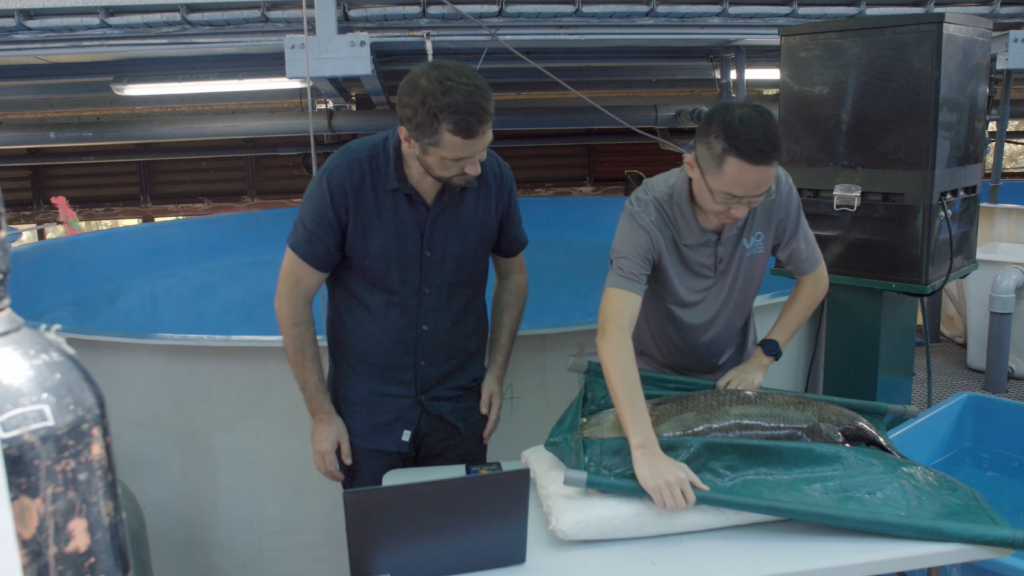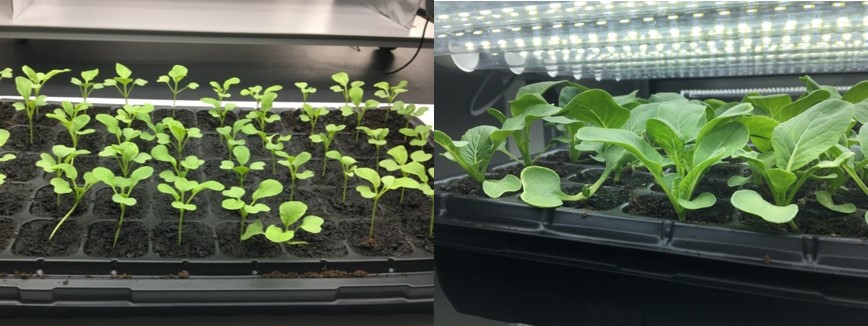High-tech food production is where science and technology meet food production. But what exactly happens there?
In recent years, advances in high-tech food production have grown in leaps and bounds with a promise to improve production capacity, mitigate against climate change and disease, and even create more nutritious food. However, the questions may remain for some: Are foods produced through technology natural and safe for consumption? Does high-tech farming result in the genetic modification of food?
For others, the bigger question might perhaps be: Do we even need to do this?
In Singapore, the use of innovation and technology in food production is critical as we seek to grow more with less and strengthen Singapore’s food security. After all, Singapore is a small country with limited resources. Technological innovations, on the other hand, have the potential to improve product quality and process efficiency, and significantly intensify production.
Supplying Superior Asian Seabass
One shining example of high-tech food production is a project by Temasek Lifesciences Laboratory (TLL) and SFA’s Marine Aquaculture Centre (MAC) to selectively breed Asian seabass. This involves identifying breeding fish (brooders) with ideal biological traits and breeding them to create more superior lines of fish.
Dr Yue Gen Hua, a Senior Principal Investigator at TLL, has been involved in the project since 1998. He shares that the project started with a data collection exercise, which ran from 1998 to 2004, to observe over 500 brooders from the wild of Australia, Malaysia, Indonesia, Singapore, Taiwan and Thailand. Information on spawning, growth, feed, culture conditions and genetic variations were among some of the data collected.
“After researching, analysing and selecting the genetic and molecular parentage from three generations of brooders, TLL and MAC managed to breed better Asian seabass within a shorter timeframe,” says Dr Yue.

Examination of Asian seabass broodstock. Source: Temasek Life Sciences Laboratory
In addition, Dr Yue and his team also identified DNA markers associated with disease resistance and meat quality traits. This initiative has since led to the successful breeding of three elite fish lines – one for fast growth, one resistant to disease, and one with a higher content of omega-3. Tests are ongoing to breed hybrids of these three lines.
“With selective breeding, growth, quality and disease resistant traits can be selected with high precision,” says Dr Yue. “Compared to wild-caught fish, it also contains a higher nutritional value – omega-3 in particular.”
All these, he shares, are achieved without altering the genetic makeup of fish.
“Individual genes are not transferred from one species to another,” Dr Yue explains.
Not only that, but when grown in a controlled environment, such as an indoor or a floating, closed containment system, these fish are less exposed to the effects of climate change, pollution, and diseases, he adds.
Lighting the Stage for Cai Xin
Fish aside, science and technology are being used to improve the growth and quality of other food as well. For example, research is ongoing to explore the use of light intensity to optimise the growth of cai xin and improve its nutritional properties. Driven by Dr Weibiao Zhou, Professor and Head of the Department of Food Science and Technology at the National University of Singapore (NUS), the project has seen the team experiment with various lighting factors such as light intensity, red-blue light ratio and exposure time.
For instance, the team has experimented growing cai xin seedlings under different light intensity, by regulating the distance between the LED sources and the seedlings.

Cai xin seedlings grown under low light intensity (left) vs high light intensity (right) after 14 days. Source: Dr Weibiao Zhou, NUS
The team found that light intensity controls the growth of plants like cai xin.
“While the growth of the plant positively corresponds with a higher light intensity, the light intensity cannot be increased without a limit. Beyond what is known as the light saturation point, heating damage from high light intensity will prevail,” Dr Zhou explains.
Apart from growth rate, Dr Zhou also made interesting observations when it came to the effect of light on the development of metabolites1 which are naturally found in plants. For example, metabolites which contribute to the antioxidant capacity of plants responded well to increased white light intensity, while metabolites which function as natural pest repellents did better under low white light conditions. Therein lies the challenge – how can we use science and technology to enhance the natural and desirable characteristics of the vegetable under the same growth conditions.
Nevertheless, Dr Zhou’s findings show that lighting conditions can indeed be manipulated to enhance the growth and nutritional level of cai xin in indoor farms. This certainly holds promising potential in providing a smarter way to grow the vegetables faster and better.
Food for The Future
High-tech food production covers a wide spectrum of activities, including automation and climate-controlled environments. Often, science and technology are roped in to replicate the natural environment while optimising growth conditions, to allow us to grow more – faster and better – with less.
Already, the use of high-tech food production is starting to bear fruit in contributing to our food supply needs. On the egg production front, computerised feed mixing and mechanised weight grading are among some of the automation and technology tools employed by local farms, enabling them to supply 28% of the nation’s total consumption today. This added up to 616 million eggs in 2020!
The need for Singapore to produce its own food is urgent. Climate change and extreme weather events have already begun impacting farmers and countries around the world. With Singapore importing more than 90 per cent of our food, volatilities and supply disruptions impact us heavily. Growing locally would therefore create a buffer against such disruptions, and enhance our food security by reducing our reliance on imports.
High-tech food production is an indispensable part of “30 by 30” goal, to build our agri-food capacity and capability to produce 30 per cent of our nutritional needs locally by 2030. In the case of the above examples, as Dr Yue and Dr Zhou’s research have been promising and seabass and cai xin are merely the beginning as other types of seafood such as grouper, tilapia and shrimp, as well as fruits and vegetables that we regularly consume, can also stand to benefit from such technologies.
Indeed, this is just the beginning as we tap on high-tech food production to work towards securing Singapore’s food future.
1Plant metabolites such as carotenoids, chlorophylls, glucosinolates, phenolic compounds and anthocyanin are essential components relating to the growth and function of plants.

